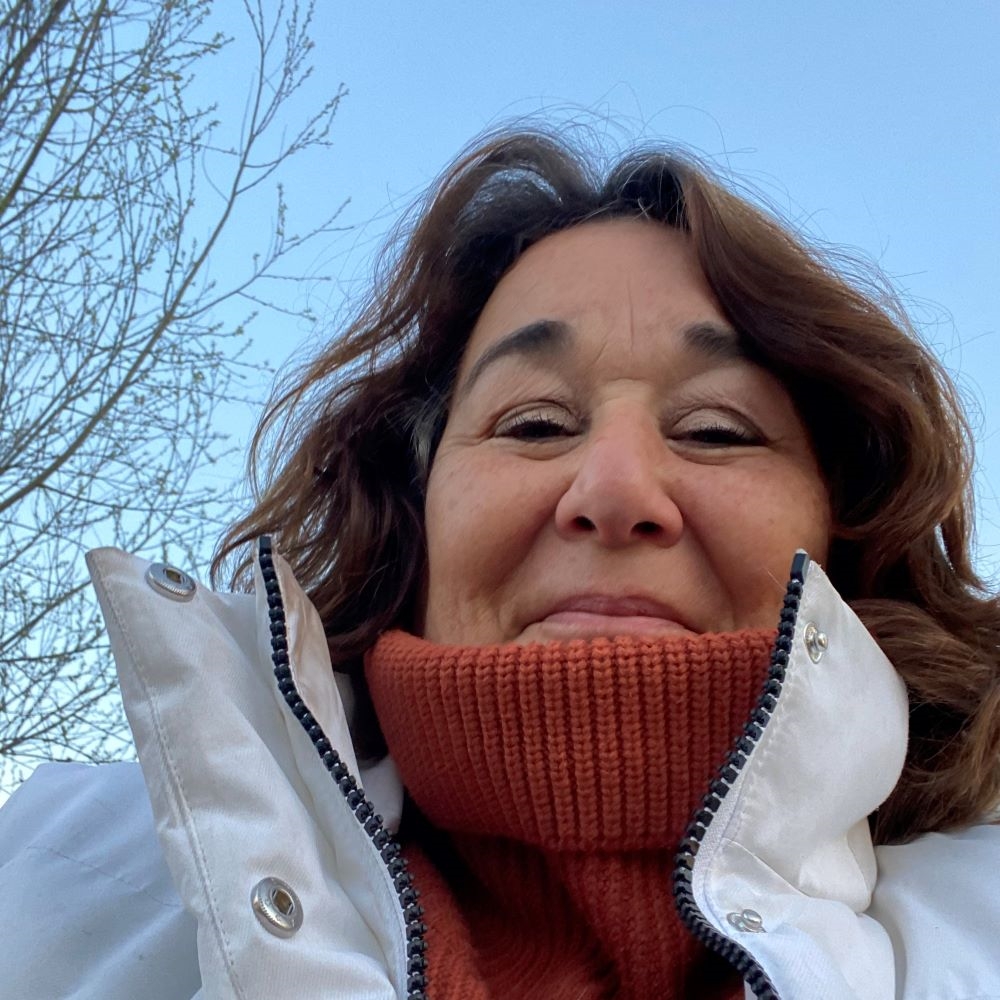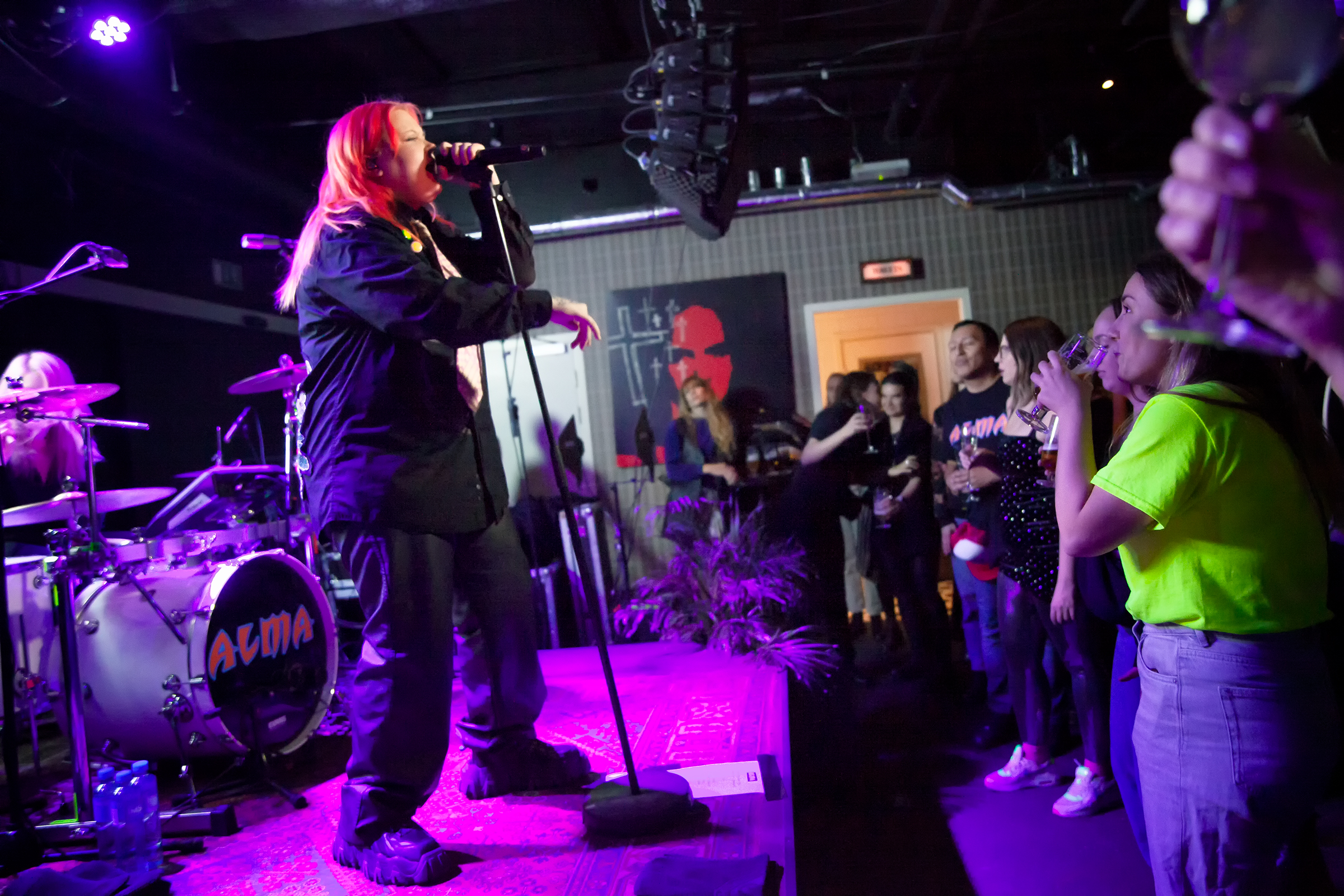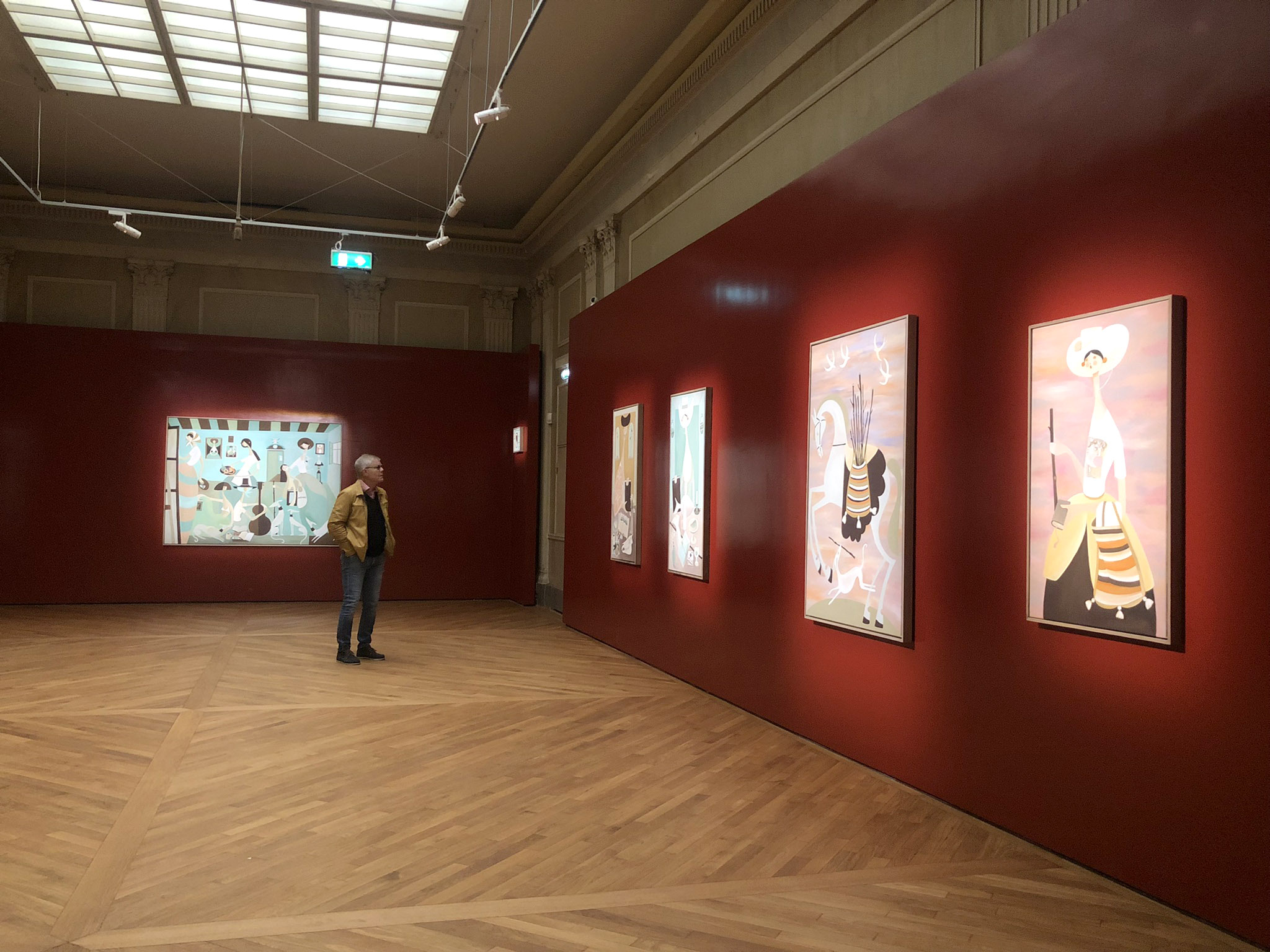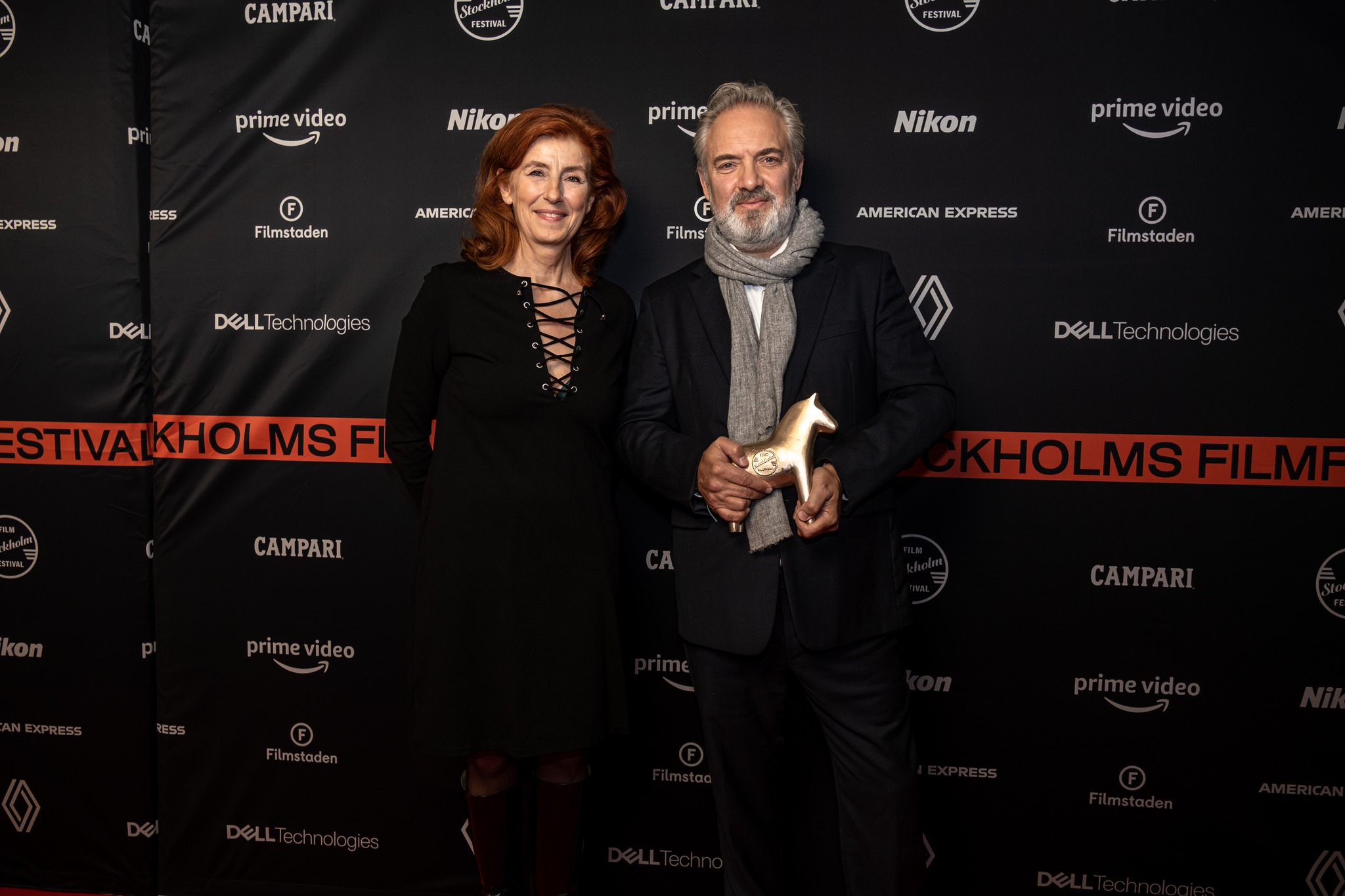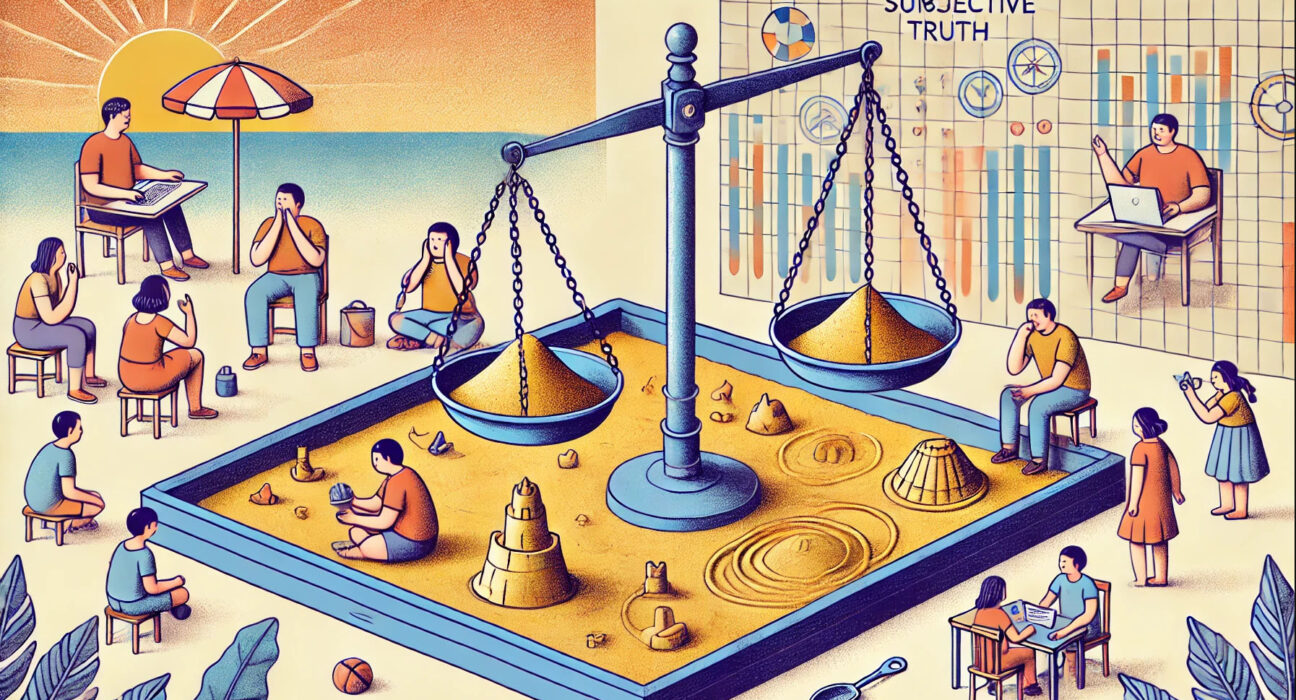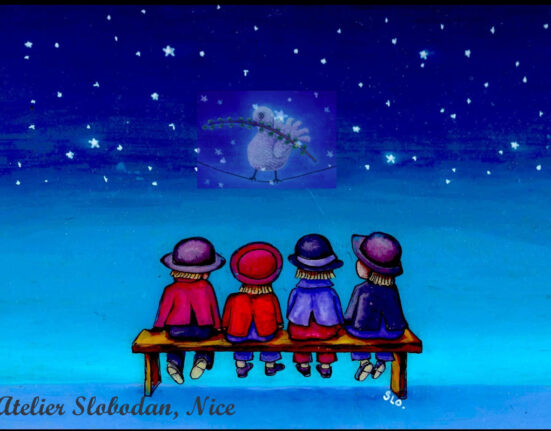Summary: psychology has helped us to see that everyone holds a personal, subjective version of the truth. While this is better than the authoritarian believe what I tell you paradigm, there are more steps to take. Otherwise, many will continue to confuse ‘my’ truth with ‘the’ truth, leading to self-victimisation and splitting.
Two children get into an argument over a sandcastle. Jimmy tries to take the bucket from Sally, who whacks him over the head with a plastic spade. They wail and run to their mothers for justice. Needless to say, their caregivers will encourage them to explain what just happened. But will they also help them to understand the deeper context?
In the old days there was little room for individual truths. A hundred years ago Sally and Jimmy would both have been whacked over the head for arguing. End of. Whomever your authority was, religious, parental, or political, they told you what to believe. As I described in a previous post, our collective need for blind trust has slowly but surely been evolving into an individual set of moral and ethical codes. Our own inner truth.
However, having liberated the right to our ‘own’ truth, as a society, and as individuals, we are now in grave danger of mistaking ‘my’ truth for ‘the’ truth.
In bad therapy, clients uncover the truths that they were conditioned to believe, as well as their own wounded truths like ‘my mother never took me seriously’, or ‘my father wanted me to be a boy’. And then clients are left there, nursing their grievances and losing themselves in a state of victimhood. It’s great material for an autobiography but this grievance culture does not help further our ability as humans to live in greater harmony.
If we are ever to heal the deep polarisations and splits that we see in the world today, we must learn to take our ‘truth perception’ one step further. To work through our own narrow ‘truth’ of the content, the ‘what happened’, towards the greater truth of the context ‘why it might have happened’. Only then can we move to a more adult stage of relating.
Back to Jimmy and Sally
Despite their earlier toddler rage, Jimmy and Sally eventually fall in love and become a couple. However, the sandpit incident, is not forgotten. As they share their current difficulties with their therapist, Jimmy brings it up; “Sally is still as wild and wilful as she was then, now verbally hitting me over the head rather than with a spade”. Whereupon Sally replies that Jimmy is the provocative one, “blaming me for standing up for myself when it is Jimmy who undermines me.” Their therapist reflects back that in Jimmy’s world, Sally is wild and wilful, while in Sally’s world, Jimmy is provocative and undermining. Both truths are acknowledged for the pain and the frustration they cause, yet neither is seen by the therapist as ‘the’ truth. She is more interested in the context of these statements.
Aggrieved that the therapist is not taking sides, Sally now presents the views of others who back her up. Like her mum, who says Jimmy was already controlling as a little boy. Whereupon Jimmy counters with the view of his mates, who love his helpful and kind nature, and all think Sally is a typical drama queen.
Our deeply held truths need comrades rather than impartiality and are like social media rabbit holes – driven by the bad use of AI – reassuring us we are right and taking us into ever deepening canyons of strongly held beliefs, splitting society into a thousand warring bits of cancellation culture and ghosting.
The therapist, however, is listening on two wavelengths; the wavelength of the individual’s personal truth, the content, which she respects at all times, and the wavelength of the various scenarios into which this individual truth was embedded, the context.
While the content keeps re-wounding you, seeing the context can heal
The therapist encourages Jimmy and Sally to begin by actually hearing and acknowledging one another’s truths. Because actively hearing the other’s subjective truth will not rob either one of them of the right to hold their own truth. Once that is done, however hard it is to hear and break out of the defensive cycles they have gotten used to, a gentle and curious exploration of Sally and Jimmy’s ‘truths’ leads to the underlying context, the missed opportunity from all those years ago.
Let’s go back to the sandpit – the children came running to their caregivers:
Sally’s caregiver: I see you are upset Sally, what happened? (content)
Sally: Jimmy pulled at the bucket to take over (her subjective truth)
Jimmy’s caregiver: Jimmy, is that what happened? (content)
Jimmy: Sally always wants to do things her own way, but she was being clumsy. (his subjective truth)
Caregivers: well Jimmy, just leave Sally alone, and Sally, don’t whack people over the head with your spade. And say sorry.
The context is now lost, and their individual truths become an imbedded narrative. But where could this have gone, where would a therapist take it, in order to discover the context.
Jimmy’s caregiver: but did Sally ask for your help? (content to context – why did it happen)
Sally: I don’t need help (distorted truth in the moment)
Sally’s caregiver: not ever? (content to context)
Jimmy: yes, you do, you need my help! (his distorted truth in the moment)
Both caregivers/the therapist: well, giving help and getting help can be hard. Perhaps you can practise talking about when you do and when you don’t need help. Sally, we all need help sometimes, and Jimmy, just because you offer help, doesn’t mean someone has to accept it…. (explaining the context)
So the order is express your truth, hear the other’s truth, find the context
The magic words: “I see how that feels/must have felt for you” can be a prelude to being able to see that the intention behind that which was experienced as wounding was not malevolent. Which doesn’t mean you have to condone it. But it widens the field, it widens the perspective, and it allows the energy of growth and learning to come in.
You don’t need a therapist to do this for yourself. Take a deep breath, acknowledge the truth of your own experience first, and take time to grieve over what happened. As long as you need to. And then, take another breath, see the other ‘truth’. You can do this either with or without the active participant. When you are ready to ask ‘why’ it might have happened like that, you can find the wider context, which stops you from remaining the victim of your truth, isolating you in your own ‘my way or the highway’ rabbit hole. This is the work we need to do to move to a collective contextual truth that transcends all the polarisation and the splitting and actually points the way to healing.
It is like the blind men explaining to one another what an elephant looks like. “He is long and straggly”, says the one holding the tail. “No, he’s not, he’s thick like the trunk of a tree”, says the one touching the feet. “You are both wrong,” says the third, “he is like the tube of a washing machine”, clutching the elephant’s trunk.
Each one of us carries a piece of the relational puzzle. Each one of us is right, but taken in isolation, each one of us is wrong. It is up to each one of us to step out of the need to prove our own truth, or to disprove the truth of the other, and show curiosity to see the whole elephant.
Then we create a world of respect for all the pieces of subjective truths, so that, brought together, they create a contextual, more forgiving and more growthful truth.
Listen to this article:
September 2024
If you are triggered by the content of this article, if you want to talk about a long held, cherished truth that you have and that you don’t think you want to give up, then call me, send me an e-mail, or leave a comment. Let’s talk about it. I offer all prospective new clients a free half hour ‘getting to know you’ session. A lot can happen in half an hour. You’re welcome to make contact.
Lysanne Sizoo, international Mental Health specialist
With over two decades of experience, Lysanne Sizoo specializes in assisting expatriates, international professionals, and global nomads facing mental health challenges. Her professional journey has taken her to the United Kingdom, Sweden, New Zealand, and the Netherlands. In 2023 she relocated from Holland back to Stockholm for the second time around and meets clients both online and in her office on Södermalm.
Living away from one’s native country comes with its unique set of psychological hurdles, alongside the everyday ups and downs of life. This holds true for global nomads, cross-cultural adults, and children alike.
In these articles Lysanne writes about the different challenges that face us in life, as expats and as ordinary human beings. She uses her own experience as a jumping off point for reflections on how to use the lessons from therapy to live a more contended and congruent life.
If you have specific topics or issues that you’d like Lysanne to explore in her articles, please reach out via the contact form on this website or directly through her personal website. Rest assured, your privacy and confidentiality will be upheld.
